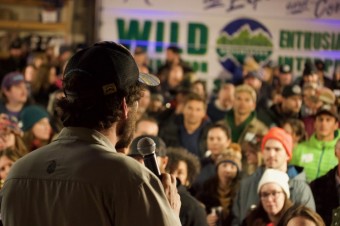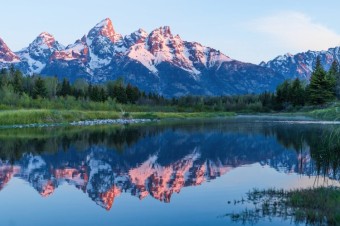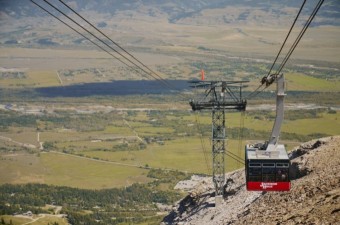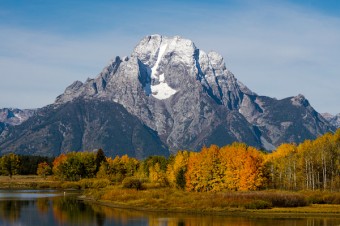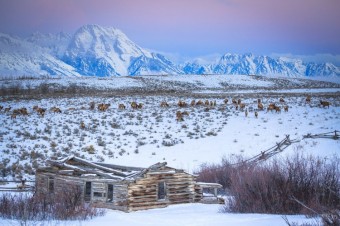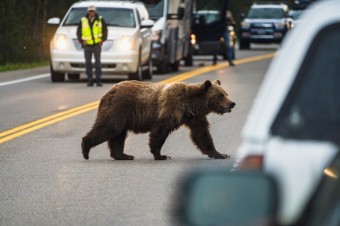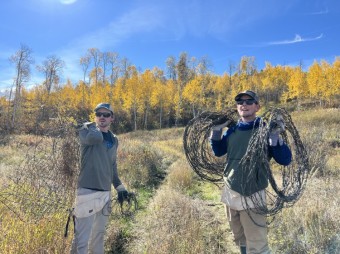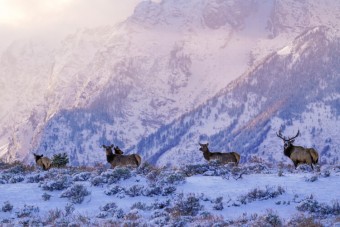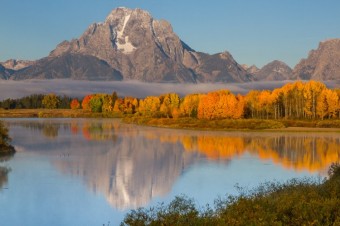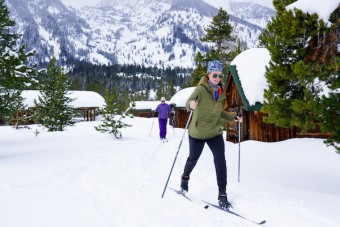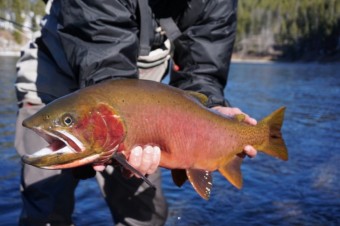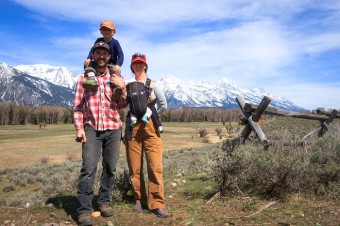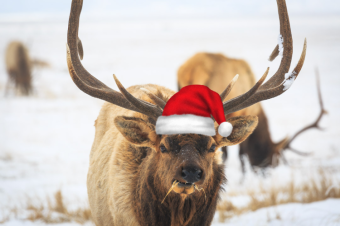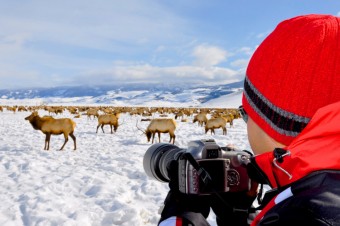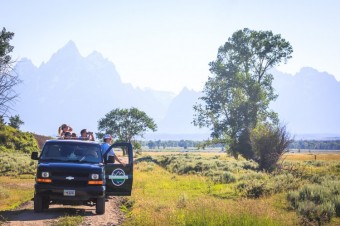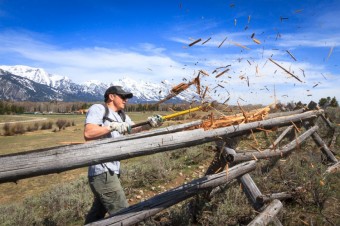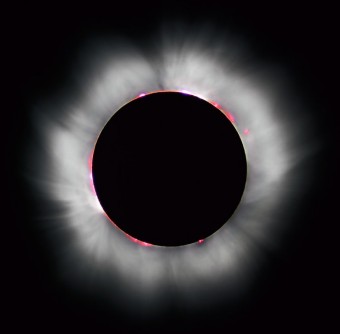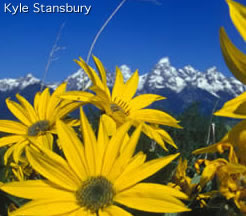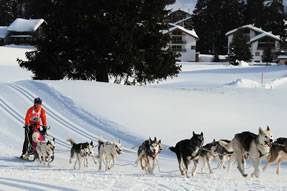-
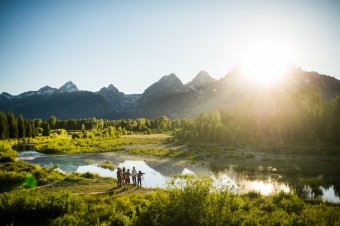
At EcoTour Adventures, we’ve always believed that experiencing wildlife should go hand-in-hand with protecting it. Since our founding 17 years ago, we’ve contributed over $200,000 to wildlife and land conservation efforts—and we absolutely could not have done it without you, our guests. Your commitment to giving back has made all the difference, and we want to celebrate your remarkable contributions.
-
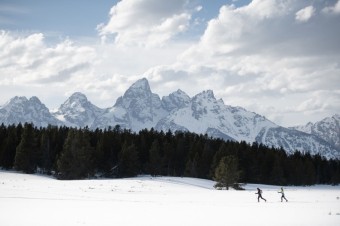
Escape the crowds and immerse yourself in the beauty of Jackson Hole’s winter landscapes with our guide to the top Nordic skiing destinations. From the iconic trails of Grand Teton National Park to hidden gems like Turpin Meadow Ranch, we cover the best spots for every skill level. Whether you're a seasoned skier or a beginner, these trails promise unforgettable views and adventures. Ready to glide into winter bliss? Read on!
-
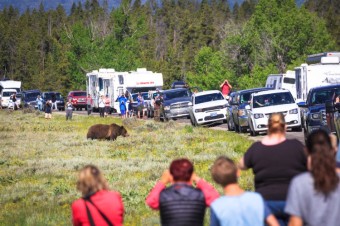
National parks offer unique encounters with wildlife in their natural habitats, but rising visitor numbers have led to troubling behaviors. With guidelines from the National Park Service on safe wildlife interactions, this article highlights how we can all enjoy these beautiful spaces responsibly. Learn how to be a true steward of our parks and protect the wilderness for future generations.
-
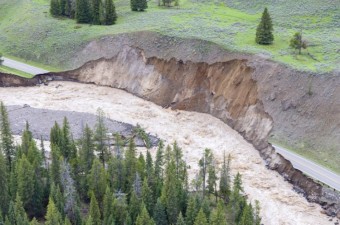
By now, the news of the historic flooding of Yellowstone National Park and the surrounding communities has made national attention. We want to send out a heartfelt thank you to everyone who has been reaching out to check in on our community, and we want to assure everyone that Jackson has been unaffected by the floods
-

Did you know that the #1 reason people travel to Wyoming is to view wildlife? It’s time that the tourism industry across the state steps up to promote their most valuable asset, the abundant wildlife that calls Wyoming home. Read more to learn how EcoTours founder Taylor Phillips is working to change how the tourism industry contributes to wildlife conservation.
-
It’s starting to get crowded in the Jackson Hole Valley. Thousands of animals; elk, bighorn sheep, mule deer, moose, bison, and pronghorn are beginning to migrate across Grand Teton National Park and the National Refuge, concentrating as they head towards critical winter range. Eagles, Trumpeter swans, and diverse waterfowl species are also joining in to the gathering. Determined wildlife watchers may even spot grizzlies or wolves! With the human crowds of summer long gone, November and December are fantastic months to view wildlife of all types, here’s what not to miss!
-
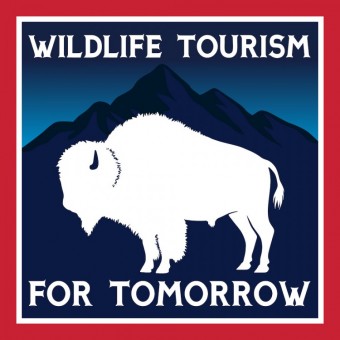
Along with our partners The WYldlife Fund, Greater Yellowstone Coalition, and the Cougar Fund, Ecotour Adventures is proud to announce the launch of Wildlife Tourism for Tomorrow, an initiative which inspires the businesses and individuals who depend upon Wyoming's Wildlife to give back. Funds raised from WTFT will go directly to critical on-the-ground projects that benefit Wyoming’s wildlife and ecotourism across the state, including Wildlife Crossings, Wildlife Friendly Fencing, Aquatic and Terrestrial Habitat improvements.
-
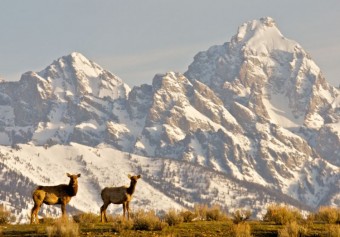
Whether you’re a local or first time visitor, April is a hidden gem for experiencing Jackson Hole, Grand Teton, and Yellowstone National Parks. This transition period between winter and summer offers great opportunities for exploration free of crowds. Whether observing migrating wildlife, soaking in hot springs, visiting museums, or cycling through Grand Teton there are a multitude of options to adventure in Jackson Hole.
-
Though snow remains deep in Jackson Hole and Yellowstone's interior, the winter season is coming to an end in Grand Teton and Yellowstone National Parks. Snow covered roads are starting to be plowed in preparation for the coming summer season. Winter isn’t quite over yet however, here’s what you need to know about exploring Grand Teton and Yellowstone National Parks this spring, including late winter xc skiing, wildlife watching (don’t forget your bear spray!), road opening dates, and more.
-
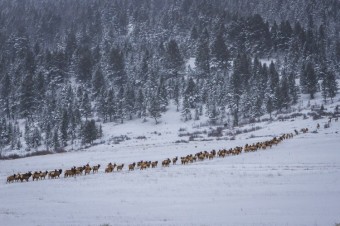
While the recent snowstorm brought big smiles to many powder skiing enthusiasts, for many of our wild neighbors it came as yet another challenge in their yearly struggle for survival. Winter Habitat Protections (also known as winter wildlife closures) are a critical management strategy which give our elk, deer, bighorn sheep, moose, bison and other iconic species the space they need to survive. Read more from the Jackson Hole EcoTour Adventures Blog Here
-
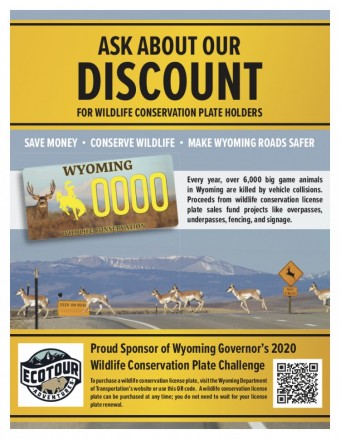
Have you gotten your Wyoming Wildlife Conservation License Plates yet? Time is running out to help conserve our wildlife and save big from participating businesses! Wyoming Residents who apply for or currently have a Wildlife Conservation Plate before the end of 2020 are eligible for special discounts at businesses across Wyoming including EcoTour Adventures!
-
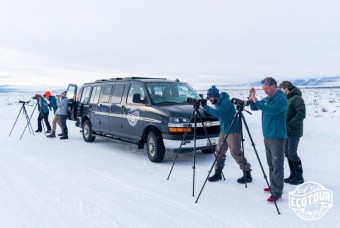
Though most of our guiding occurs in the National Parks and National Elk Refuge, wildlife depend on a lot more habitat beyond their boundaries. Learn more about the importance of State Trust lands and the threat they currently face from this Guest Shot in the Jackson Hole News & Guide by ETA Naturalist Josh Metten.
-
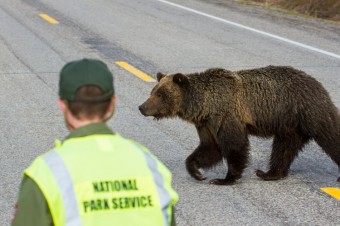
If you’re traveling into the backcountry of Yellowstone or Grand Teton National Parks or the surrounding wild country, bear spray is an essential item to bring with you. The Greater Yellowstone Ecosystem is grizzly country, and though bear attacks are rare, if one occurs the effective use of bear spray has been shown to prevent injury in 98% of cases! In order for bear spray to be effective however, you have to know how to use it. For bear spray to do its job it needs to be easily accessible and ready to fire from a safe location, in working order, and discharged properly. Here are 7 ways to effectively carry and use bear spray...
-
Yellowstone National Park is big, 2.2 million acres to be exact. Set aside by congress as the first National Park in 1872, its fisheries and beauty have remained largely unspoiled. While YNP is known for its abundant wildlife and sprawling geyser basins, it lies at the heart of some of the best trout fishing in North America, offering anglers unmatched opportunity. If you plan on a successful DIY fishing trip in this National Park, it will take some in depth planning. Here we will examine a few areas worth exploring in the park, first in the southern portion, then working our way up to the Northern Range
-
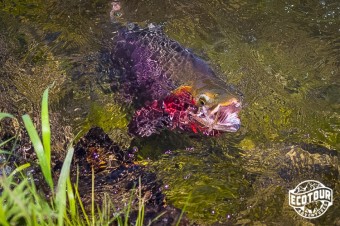
Do you love fly fishing, but would rather go it alone than hire a guide? There is a certain feeling of personal pride that can be taken from a successful DIY fishing trip. The key, however, to a successful excursion is proper preparation and knowledge of the area. Grand Teton National Park offers anglers numerous opportunities to target trout in pristine rivers and lakes beneath soaring mountains. In these waters, you will find native cutthroat, brown, rainbow and lake trout. Here are some ideas of where to go.
-
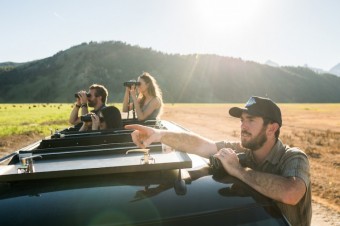
Thinking about visiting Jackson Hole for the Fourth of July? It is a great time of year to visit. Early July is considered the beginning of summer by most locals. By the fourth of July, temperatures have warmed up consistently and the landscape is awash with blooming wildflowers and rustling aspen leaves.. There are plenty of fun activities to check out when you come to celebrate your Jackson Hole Fourth of July, here are a few of our suggestions!
-
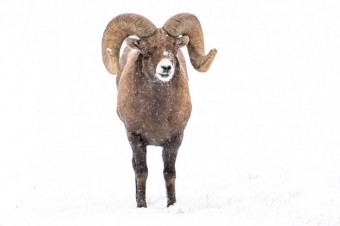
With thousands of animals concentrated in the Jackson Hole Valley, late winter is a fantastic time of year to look for wildlife and Grand Teton National Park and on the National Elk Refuge. From wolves and elk to moose, bighorn sheep, eagles, otters and the first songbirds of spring read on to learn about the best places to see winter wildlife in Jackson Hole.
-
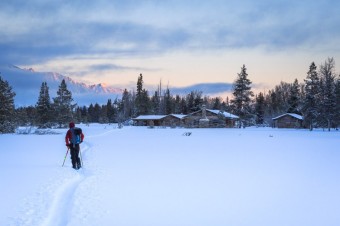
As snow covers the valley of Grand Teton National Park, a winter wonderland has emerged, providing ample opportunities for exploration on cross country ski or snowshoes. The guides at Jackson Hole Ecotour Adventures have been out exploring the park on ski and snowshoe tours, here are some of our favorite spots!
-
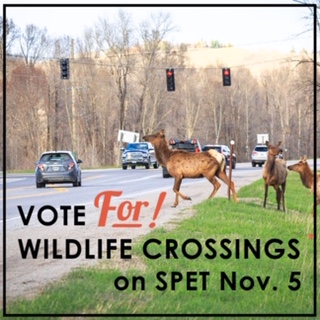
What is it that makes Jackson Hole special? A lot of things as it turns out. Our rugged mountains and abundant public lands, our free flowing rivers and thriving wildlife have inspired a community who seeks to live in harmony with nature. But as our community grows we are reminded of the harsh reality that we also have impacts on our wild neighbors. Wildlife vehicle collisions in Teton County alone account for around 500 animal deaths and millions of dollars of damage each year. As a business and residents who depend upon the natural world around us it only makes sense to invest in our wild places, which is why the EcoTour Adventures team is excited to endorse the Wildlife Crossings Special Purpose Excise Tax Ballot Initiative. By funding the creation of science based wildlife crossings in Teton County we can make our community safer, save money on costly collisions, and preserve and protect the wildlife whom are a critical part of the ecosystem we call home.
-
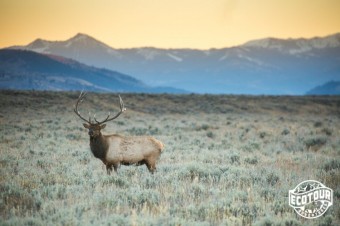
It’s a spectacle which occurs just once a year. Antlered giants emerge from dark timber and announce their dominance with a loud bugling call. The fall elk rut is here, offering wildlife enthusiasts an unparalleled opportunity to view this amazing behavior beneath the rugged peaks of Grand Teton and Yellowstone National Parks. It’s one of our favorite times of year, read on to learn why.
-
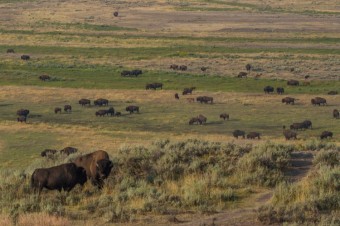
“The American Serengeti” - a landscape filled with herds of bellowing bison, sprinting pronghorn antelope, bighorn sheep standing atop cliffs, grizzlies and wolves hunting in wildflower filled meadows. Views like these were commonplace during the time of Lewis and Clark, but largely vanished due to market hunting throughout the 1980’s. But not all was lost, and today thanks to over a century of dedicated conservation, the American Serengeti still has a home, Yellowstone. Today, the wild lands of the Greater Yellowstone Ecosystem host the greatest abundance and diversity of wildlife that has been found here in the last 130 years! From the largest remaining herd of wild bison, to hundreds of bird species, massive elk, deer, and pronghorn migrations, wolves, grizzlies and mountain lions, Yellowstone and Grand Teton National Parks are a wildlife viewing hotspot. Want to make the most of a trip to see wildlife in the Greater Yellowstone Ecosystem? Read on.
-
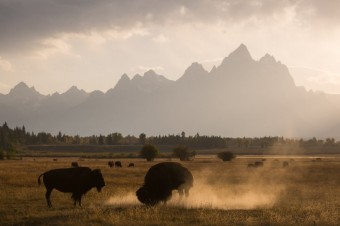
Are you looking for some of the best things to do in Jackson Hole in summer? Then you’ve come to the right place. We can help you find the best summer activities that also offer the most breathtaking views. Whether you’re looking to check out some wildlife in their natural habitat, scope out the best mountain ranges, experience the exhilarating rapids or just get some fresh, mountain air -- we’ve got you covered.
-
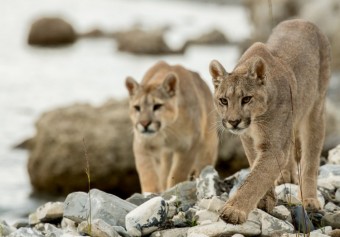
Puma, Cougar, Panther, Catamount. With a historic range from Alaska and Northern Canada, through the United States, Central America and all the way down to the southern tip of South America, the Mountain Lion is known by many names. They are secretive by nature yet occasionally persecuted after conflict with ranching and hunting interests. But for some cats in southern Patagonia things are changing. Can sustainable ranching practices and the development of a puma and wildlife watching tourism industry be the key to the future of both ranching and the Patagonian Ecosystem?
-
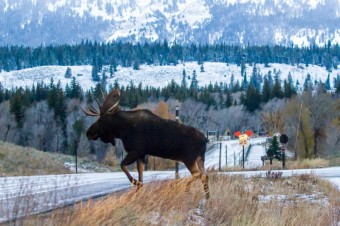
We’ve all seen roadkill on the side of the road this winter. It’s a problem that kills hundreds of animals in Teton County, WY annually, thousands more statewide. Fortunately the state of Wyoming is stepping up to make our roads and wildlife safer, and now we all can pitch in too! Wildlife Conservation License Plates are now available, and the proceeds go towards wildlife crossings and other mitigation strategies on our roads. EcoTour Adventures and many of our guides are proud to be among the first 500 plates ordered, and we’re challenging you to be part of the next 500! Read more about how to get your plate and support wildlife conservation here.
-
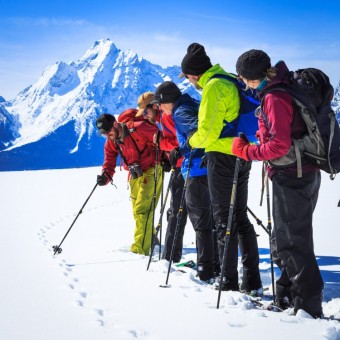
"Winter in Jackson Hole offers a start contrast to the hustle of summer. With the crowds of summer long gone, a peaceful silence falls across the snow covered landscape of Grand Teton National Park, perfect for exploration on cross country ski or snowshoe. Wildlife are concentrated in the valleys across the Greater Yellowstone Ecosystem, offering unparalleled opportunities for viewing species like wolves, elk, bison, moose, bighorn sheep, bald eagles and more. We're excited to announce three brand new tours for the Winter 2018-2019 season, learn more about how to maximize your winter vacation to Jackson Hole!"
-
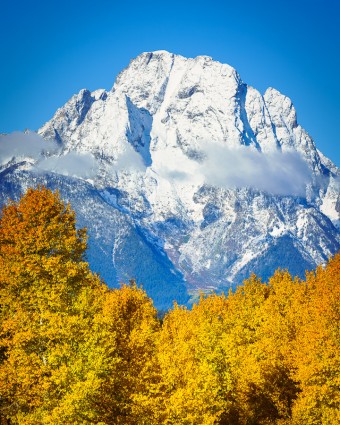
There is a crispness in the air today Jackson Hole. Mornings are cold and leaves are starting to change. The fall has always been a special time to me, with fond memories of still evenings listening for the bugling of elk beneath golden aspen groves. Right now there is something for everyone in Grand Teton and Yellowstone National Parks, read on to learn more!
-
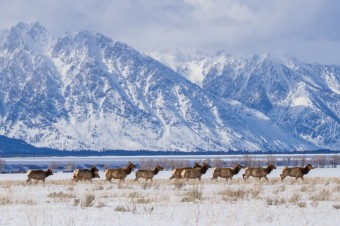
Last year over 360 deer, elk, and moose were struck and killed by cars in Teton County, WY alone! We can do better than this and protect people and wildlife by developing safe wildlife crossings. Wyoming HB 0039 is a step in the right direction creating funding for these crossings through a Wildlife Connectivity License Plate program. Ecotour Adventures has pledged support for the bill and committed to outfit our vehicles with the plates should it pass. Read more about this important issue and how you can help in the latest Ecotour Adventures Blog
-

Located at the interior of over 20 million acres of diverse habitat, Grand Teton and Yellowstone National Parks are often seen as the core of what is called the Greater Yellowstone Ecosystem (GYE). As one of the last relatively intact temperate ecosystems left on earth, the GYE is home to massive mammal migrations, the largest remaining wild bison herd, diverse bird species, grizzly bears, wolves and more. This October, Jackson Hole Ecotour Adventures partnered with our friends at the Greater Yellowstone Coalition to share the GYE with Coalition members, an intimate three day exploration of Grand Teton and Yellowstone National Parks.
-
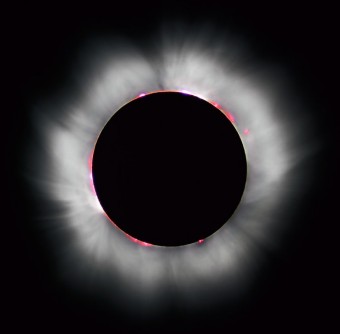
In less than three weeks a once in a lifetime event will occur across Jackson Hole and Grand Teton National Park, a total Solar Eclipse. With stunning mountain vistas, Grand Teton National Park and the valley of Jackson Hole are popular locations for viewing the eclipse, which is predicted to be the valley’s largest event in history. Planning on viewing the eclipse in Jackson Hole? Here’s what you need to know.
-
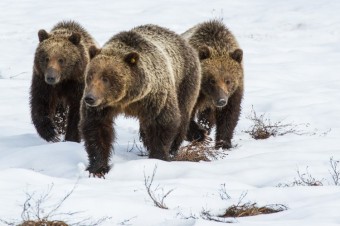
Today the valley of Jackson Hole is protected by Grand Teton National Park but before 1950 much of it could have been lost to development, threatening habitat for pronghorn antelope, elk, bison, grizzly bears and more. Learn more about the battle for Jackson Hole and current threats to other National Monuments across the country.
-
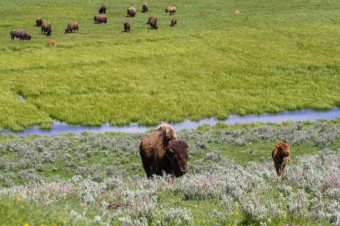
It's early summer in Yellowstone and Grand Teton National Parks. A popular destination since its formation in 1872, Yellowstone was promoted in the early 1900's as a trip through Wonderland by the Northern Pacific Railroad, whose tracks were laid just north of the park. Jackson Hole Ecotour Adventures Guide Laura Kruseski recently returned from a four day trip through Grand Teton and Yellowstone National Parks, read on to hear about the tour!
-
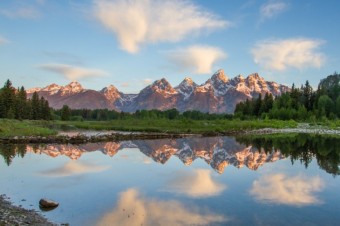
At Jackson Hole Ecotour Adventures we feel fortunate to call the Greater Yellowstone Ecosystem (GYE) our home and office. One of the most biologically rich temperate ecosystems on earth, the GYE is recognized as a World Biosphere Reserve by the United Nations. Conserving this place for the future is paramount to our mission as a company, and through our Dollars for Conservation program, we are proud to have donated over $50,000 dollars to local and national partners over the past eight years. Read on to learn more about our Conservation Partners working to keep the GYE wild!
-
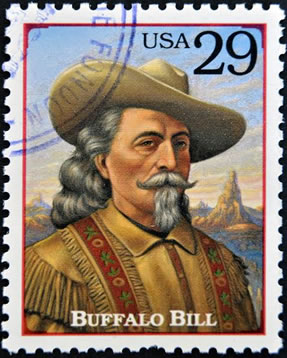
There are several great attractions around the Yellowstone region to check out if you have the time. If you are ever in Cody, WY make sure to check out the Buffalo Bill Museum. The Buffalo Bill Museum’s focuses on the life and time of William F. “Buffalo Bill†Cody (1846-1917), the noted guide, scout, frontiersman, showman
-

So many options! Where to start? The first question to ask yourself is: The Town of Jackson or Teton Village? When staying in town you have free access to the START Bus Town Shuttle, running every half hour, to move you around town. Grand Teton National Park is just 5 miles north of Town. For the folks that prefer Teton Village
Subscribe to Email Updates


